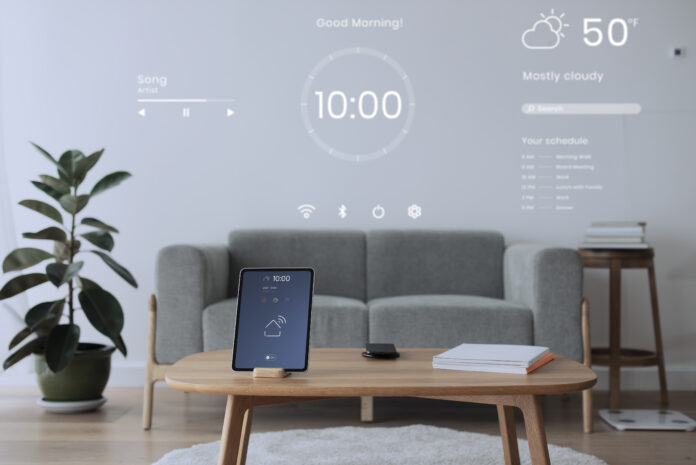Home automation has moved beyond luxury and into the mainstream. As smart devices become more affordable and user-friendly, homeowners are increasingly turning to intelligent solutions that offer greater control, energy efficiency, and convenience. One such innovation at the heart of this transformation is the smart electrical switch.
Unlike traditional electrical switches, which operate manually, smart switches allow users to control lights, fans or other devices remotely or through automated settings. These switches connect with home automation systems and can be managed via apps, voice assistants, or preset schedules. In this blog, we explore how smart electrical switches enhance modern living and why they are becoming an essential feature in connected homes.
What Are Smart Electrical Switches?
Smart electrical switches are wall-mounted control devices that operate electrical circuits, just like regular switches, but with added intelligence. They connect to your home’s Wi-Fi or a smart hub and can be integrated with home automation platforms such as Google Home, Amazon Alexa, or Apple HomeKit.
Most models allow:
- Remote operation via smartphone apps
- Scheduled on/off times
- Voice control through digital assistants
- Energy consumption tracking
- Scene setting for different moods or routines
While they look similar to conventional switches, their capabilities are far more advanced and customisable.
Benefits of Smart Electrical Switches in Home Automation
Here are some benefits of good electrical switches that will help you in your automation:
- Remote Access and Control
One of the most practical advantages of smart electrical switches is the ability to control devices from anywhere. Whether you’re at work, travelling, or simply on another floor, you can turn lights on or off with a few taps on your phone.
This remote access adds convenience and enhances security. If you’re away from home, scheduling lights to switch on in the evening can create the appearance of occupancy, deterring potential intruders.
- Energy Efficiency and Cost Savings
Smart switches can contribute significantly to reducing unnecessary energy usage. With features like motion detection, timer settings, and usage tracking, they help eliminate waste and encourage more responsible energy habits.
For example:
- You can schedule outdoor lighting to turn off at sunrise automatically.
- Bathroom exhaust fans can be set to run only for a fixed duration.
- Real-time monitoring helps identify appliances consuming excess power.
This level of control supports both environmental goals and household cost savings.
- Seamless Integration with Other Smart Devices
Smart electrical switches act as a bridge between manual hardware and automated ecosystems. They work in sync with smart bulbs, plugs, thermostats, and security systems, enabling coordinated control. You can create “scenes” like:
- Evening Mode: Lights dimmed, curtains drawn, and fans turned on.
- Away Mode: All lights and appliances turned off, and security systems are activated.
This integration improves the efficiency and functionality of a fully automated home, turning everyday routines into effortless processes.
- Voice Control for Hands-Free Operation
Voice integration has redefined convenience in modern homes. With smart switches, you can simply say, “Turn off the kitchen lights,” and it happens instantly. This is particularly helpful when:
- You’re cooking or cleaning with full hands.
- Elderly family members or people with limited mobility need access.
- You want to avoid fumbling for switches in the dark.
Most smart electrical switches are compatible with leading voice assistants, allowing for a hands-free and inclusive experience.
- Enhanced Safety and Maintenance
Smart switches also provide features that improve household safety. Overload protection, automatic shutoff, and power surge management are now built into many models.
Some switches send alerts if unusual activity is detected, like a switch being turned on at an odd hour or a circuit drawing excessive current. These early warnings can prevent electrical faults, protect appliances, and support proactive maintenance.
- Installation and Compatibility Considerations
While smart switches offer several advantages, there are a few things to keep in mind before installation:
- Wiring requirements: Many smart switches need a neutral wire, which may not be present in some older homes.
- Wi-Fi strength: Consistent internet access is necessary for remote control and syncing with apps.
- Compatibility: Ensure the switch supports the devices and automation platform you’re using.
Professional installation is suggested for more complex setups, especially if you’re integrating switches with multiple lighting zones or advanced automation rules.
Partnering with Reputable Energy Brands
Smart electrical switches are transforming the way we interact with our homes. From reducing energy consumption to adding convenience and improving safety, these switches are becoming a foundational component of home automation systems.
As more homeowners adopt connected devices, smart electrical switches provide a practical and future-ready upgrade to traditional infrastructure. Whether you’re planning a renovation or building a new property, investing in smart switching solutions can significantly enhance comfort, control, and long-term efficiency.
However, the success of any smart system relies on the quality of its components. Partnering with a reputable brand ensures that you get well-tested products, reliable performance, and ongoing support.
Trusted manufacturers also prioritise user data security, seamless integration, and regular firmware updates—essentials in any connected home. When safety, compatibility, and innovation matter, choose a name you can trust.

